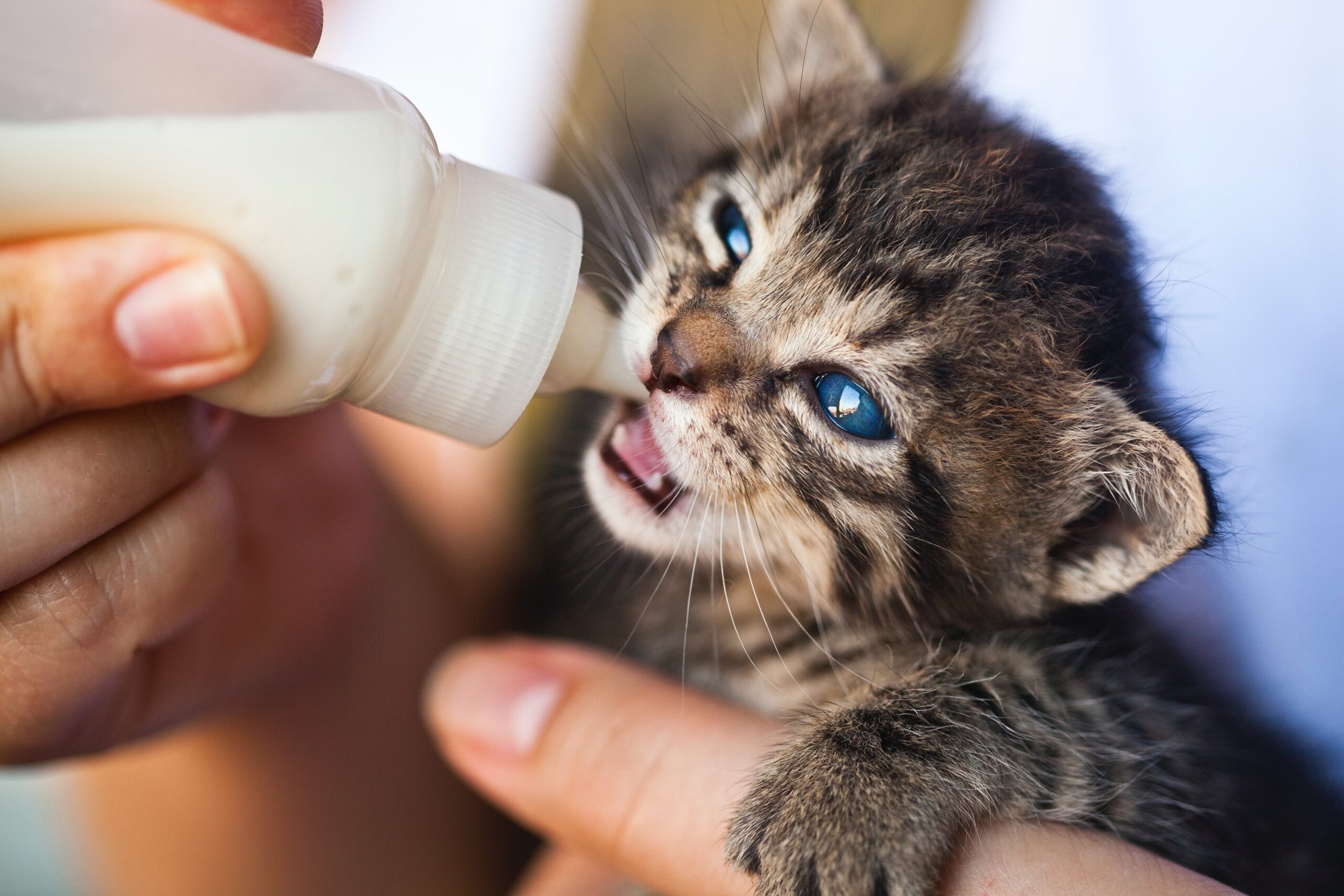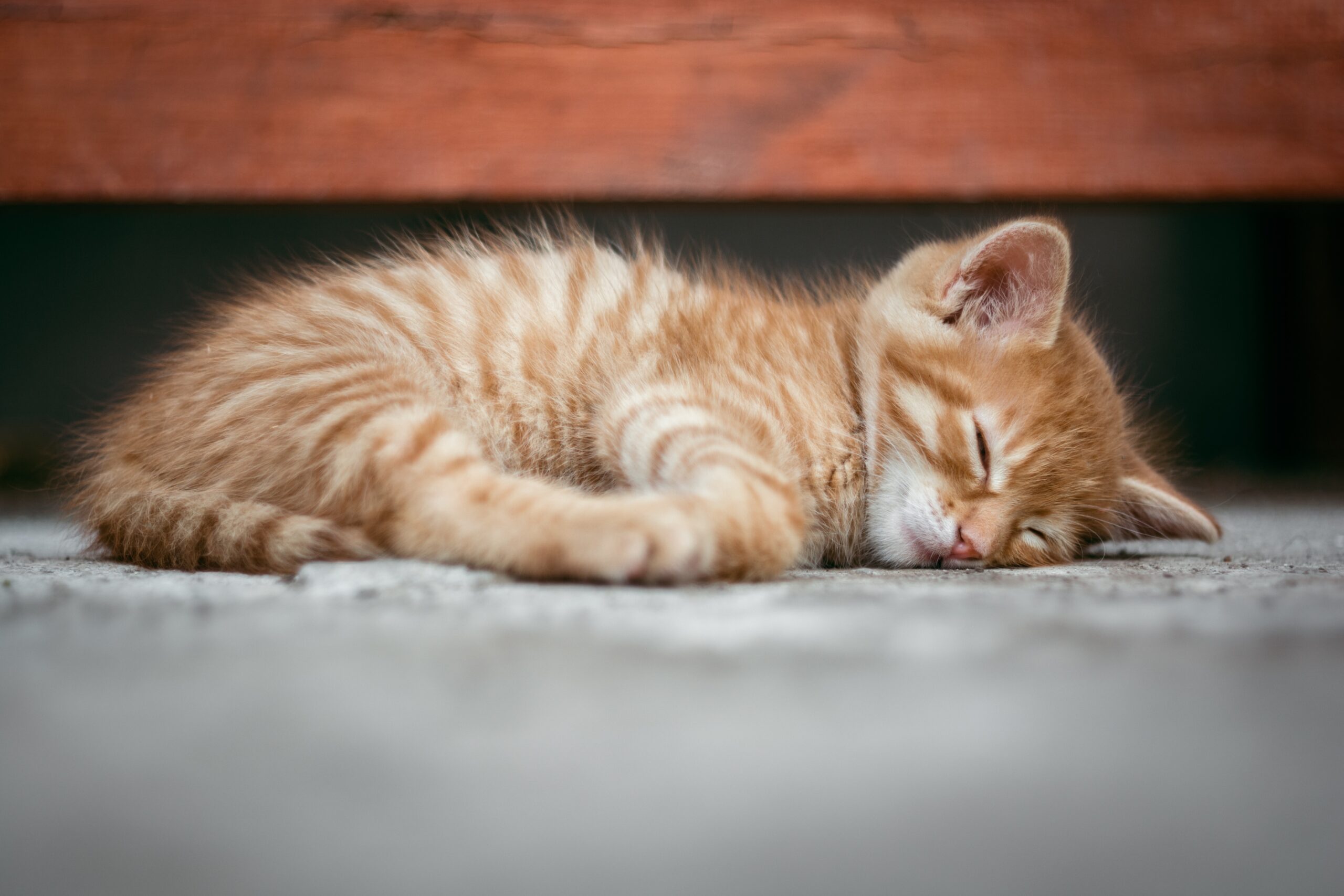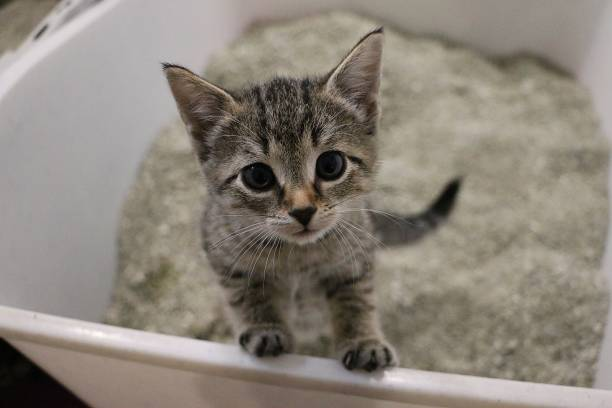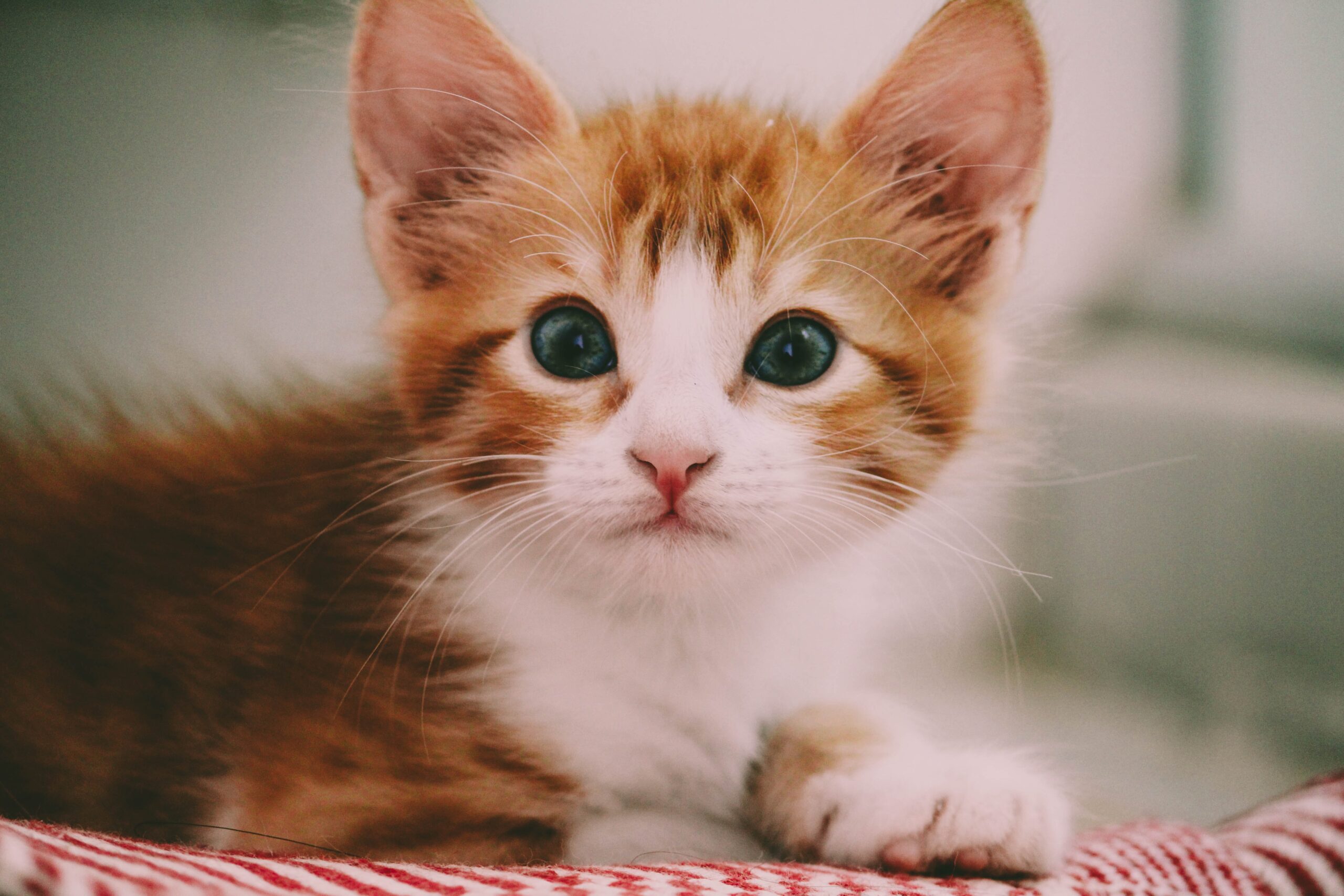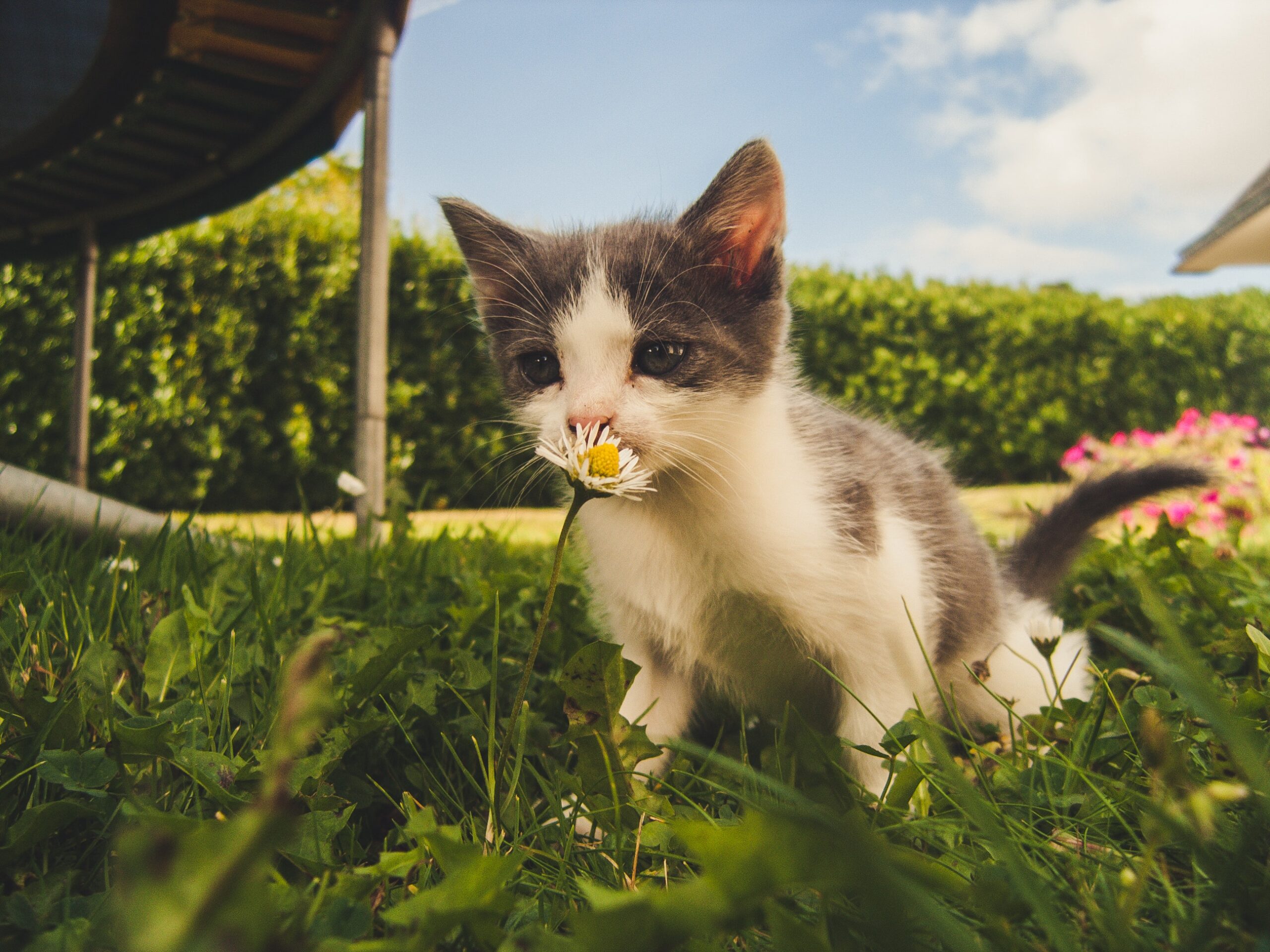When it comes to newborn kittens, there are occasionally some that are smaller and weaker than their littermates. These tiny felines, often referred to as runt kittens, face unique challenges in their early development. A runt kitten is typically the smallest and least developed among its littermates, often weighing significantly less at birth and struggling to catch up in terms of size and weight.
Helping a runt kitten gain weight is of paramount importance for their overall well-being. Adequate weight gain is crucial for their growth, strength, and immune system development. It not only ensures their physical health but also contributes to their mental and emotional well-being. By assisting a runt kitten in reaching a healthy weight, we can give them a better chance at a thriving life filled with vitality and happiness.
Assessing the Situation
Observing a runt kitten’s behavior, appearance, and growth rate is crucial in understanding their current condition. Keep a close eye on their behavior, such as their level of activity, appetite, and overall demeanor. A runt kitten may exhibit signs of weakness, lethargy, or lack of interest in feeding or play.
Pay attention to their appearance as well. A runt kitten may appear noticeably smaller and lighter in weight compared to their littermates. Their bones may feel more prominent and less covered by muscle. Additionally, their coat may lack the healthy sheen and luster typically seen in well-nourished kittens.
Monitoring their growth rate is essential. While runt kittens may start off smaller, they should still demonstrate consistent growth over time. Compare their weight and size against the average milestones for their age to determine if they are falling significantly behind.
To determine if a runt kitten is underweight and requires intervention, regular weigh-ins are vital. Weigh the kitten using a small digital scale, preferably one designed for weighing infants or small animals. Keep a record of their weight and compare it to the expected weight range for their age and breed.
If the runt kitten consistently falls below the expected weight range or is not gaining weight at a healthy rate, it is a clear indication that intervention is necessary. Consult with a veterinarian to confirm the need for intervention and to receive tailored guidance on how to help the runt kitten gain weight effectively. Remember, early detection and intervention can significantly improve the chances of successful weight gain for a runt kitten.
Veterinary Consultation
Seeking professional advice from a veterinarian is of utmost importance when it comes to helping a runt kitten gain weight. Veterinarians are trained experts who possess the knowledge and experience to assess the specific needs of runt kittens. They can provide valuable guidance and create a personalized plan to ensure the kitten’s health and well-being.
During a veterinary consultation, the veterinarian will conduct a thorough examination of the runt kitten. They will assess the kitten’s overall health, including checking for any underlying medical conditions or nutritional deficiencies that may be hindering weight gain. The veterinarian will also evaluate the kitten’s body condition score, muscle tone, and hydration levels.
Based on their assessment, the veterinarian can provide tailored guidance and recommendations. They will suggest an appropriate diet plan, taking into consideration the specific nutritional needs of the runt kitten. They may recommend a high-quality kitten food that is rich in essential nutrients, calories, and protein to support healthy weight gain.
Furthermore, the veterinarian can advise on the frequency and portion size of meals, ensuring that the runt kitten receives adequate nourishment without overwhelming their small stomach capacity. They may also suggest the addition of a kitten milk replacer or nutritional supplements to the diet if necessary.
The veterinarian’s expertise extends beyond nutrition. They can also provide valuable insights on environmental considerations, socialization, and monitoring progress. They may recommend creating a warm and stress-free environment for the kitten’s development, as well as provide guidance on proper handling techniques and social interaction to support their overall growth.
By consulting with a veterinarian, you can have confidence that you are receiving accurate and professional guidance specific to your runt kitten’s needs. Their expertise will play a vital role in helping your runt kitten gain weight and thrive.
Feeding Strategies
Proper nutrition plays a critical role in helping runt kittens gain weight. It provides the necessary energy, nutrients, and building blocks for their growth and development. A well-balanced diet ensures that the runt kitten receives essential vitamins, minerals, proteins, and fats to support healthy weight gain and overall health.
Choosing high-quality kitten food is essential for the runt kitten’s nutritional needs. Look for commercially available kitten food that is specifically formulated for their age and size. These foods are designed to provide the right balance of nutrients, including a higher calorie content to support weight gain. Opt for reputable brands that prioritize quality ingredients and have undergone rigorous testing.
Developing a feeding schedule that includes frequent small meals is crucial for a runt kitten to achieve adequate calorie intake. Their small stomach capacity limits the amount they can consume in a single sitting. Divide their daily food portion into several small meals throughout the day, ensuring a consistent supply of nutrients. This approach helps prevent overfeeding and promotes better digestion.
In some cases, a runt kitten may require additional nourishment beyond regular kitten food. If the kitten is struggling to gain weight or has difficulty nursing, a kitten milk replacer can be a beneficial addition to their diet. Kitten milk replacers are formulated to provide the necessary nutrients and energy, mimicking the composition of a mother cat’s milk. Consult with a veterinarian to determine if supplementing with a milk replacer is necessary and to receive guidance on proper usage and portion sizes.
Remember to monitor the runt kitten’s weight and adjust the feeding plan as needed. Regular weigh-ins and observation of their body condition will help you determine if they are responding positively to the feeding strategies. It’s important to note that weight gain may be gradual, so patience is key. With a balanced diet, an appropriate feeding schedule, and potential supplementation, you are providing the necessary foundation for your runt kitten to achieve healthy weight gain and thrive.
Supplemental Feeding Techniques
For young runt kittens who may struggle to nurse, bottle feeding can be a valuable supplemental feeding technique. This method ensures that they receive the necessary nourishment and helps them gain weight effectively. Bottle feeding is particularly useful for kittens who have difficulty latching onto their mother’s nipples or are not getting sufficient milk during nursing.
To properly bottle-feed a runt kitten, start by selecting the appropriate bottle and nipple. Choose a small, soft bottle with a narrow neck that is easy for the kitten to grip. The nipple should resemble a cat’s nipple, allowing them to latch onto it comfortably. Consider using a kitten-specific nursing kit, which often includes pre-packaged nipples designed for kittens.
Next, prepare the formula. Select a commercial kitten milk replacer or consult with your veterinarian for suitable alternatives. Avoid using regular cow’s milk as it lacks the necessary nutrients and can cause digestive issues in kittens.
Warm the formula to a comfortable temperature, similar to a mother cat’s milk. Test the temperature by placing a few drops on the inside of your wrist to ensure it’s not too hot.
Hold the runt kitten in a slightly upright position and gently guide the nipple into their mouth. Allow them to suckle at their own pace, and never force the milk into their mouth. Tilt the bottle to ensure a steady flow of formula, but be cautious not to overwhelm the kitten.
Monitoring feeding progress is crucial to ensure the runt kitten is gaining weight and thriving. Keep track of their weight gain by regularly weighing them using a scale. Observe their behavior during and after feeding. A healthy appetite, alertness, and contentment are positive indicators.
Adjust the quantity of formula as needed. Initially, start with small amounts and gradually increase the volume as the kitten grows and their feeding ability improves. Consult with your veterinarian for specific guidelines on portion sizes and frequency of feeding based on the runt kitten’s age, weight, and health condition.
It’s essential to provide a calm and quiet environment during bottle feeding to minimize stress for the kitten. Regularly clean and sterilize the bottle and nipple to maintain hygiene.
By employing proper bottle feeding techniques, you can ensure that the runt kitten receives adequate nutrition, gains weight, and thrives. Regular monitoring and adjusting feeding quantities as necessary will help promote healthy weight gain and development.
Environmental Considerations
Creating a stress-free environment is crucial for the well-being and development of runt kittens. Stress can negatively impact their appetite and weight gain. Minimize loud noises, excessive handling, and unfamiliar visitors in the space where the kitten resides. Keep the environment calm and peaceful to allow the kitten to feel secure and comfortable.
Providing a warm and comfortable space is essential for runt kittens, as they are more susceptible to temperature changes. Ensure that the area where the kitten spends most of their time is kept at an optimal temperature, typically around 75-80°F (24-27°C). Use a heating pad or a heat lamp, if necessary, to create a cozy and warm environment. Always ensure the heating source is properly monitored and regulated to prevent overheating or accidental burns.
To ensure the runt kitten has access to meals and reduce competition for food, consider the following tips:
- Separate feeding areas: If there are multiple kittens or cats in the household, provide separate feeding areas to prevent competition for food. This allows the runt kitten to eat at their own pace without interference.
- Individual feeding dishes: Provide individual food dishes for each kitten to avoid any potential food guarding or bullying. Use shallow dishes that are easily accessible for the runt kitten to reach their food comfortably.
- Supervised feeding: If necessary, supervise feeding sessions to ensure that the runt kitten gets their fair share of food. Separate them from other littermates during feeding time and ensure they have ample time and space to eat without interruptions.
- Gradual introduction to solid food: Introduce solid food gradually and monitor the runt kitten’s ability to eat and digest it. Start with moistened or softened kitten food and gradually transition to dry kibble as they grow and develop.
- Scheduled feedings: Establish a consistent feeding schedule to ensure that the runt kitten receives regular meals throughout the day. This helps maintain a routine and ensures they receive adequate nourishment.
By creating a stress-free environment, providing a warm and comfortable space, and implementing strategies to reduce competition for food, you can support the runt kitten’s weight gain and overall well-being.
Socialization and Interaction
Socialization is crucial for the overall development of runt kittens. It helps them build confidence, develop proper behaviors, and establish positive relationships with humans and other animals. By providing opportunities for socialization, you can contribute to their emotional well-being and ensure their healthy growth.
Gentle handling and playtime play significant roles in encouraging healthy growth and weight gain for runt kittens. Here are some guidelines to follow:
- Gentle handling: Handle the runt kitten with care and gentleness. Use slow movements and speak in soothing tones to help them feel at ease. Start by gently petting and stroking them, gradually increasing the amount of handling over time. This helps build trust and confidence in their interactions with humans.
- Playtime: Engage the runt kitten in interactive play sessions to stimulate their physical and mental development. Use toys that encourage them to chase, pounce, and play. Interactive play not only provides exercise but also helps improve their muscle tone and coordination. Ensure that play sessions are appropriate for their age and physical abilities, avoiding excessive rough play.
- Environmental enrichment: Provide a variety of toys, scratching posts, and hiding spots to create an enriched environment. This stimulates their natural curiosity and encourages healthy activity. Rotate toys regularly to keep their interest levels high and prevent boredom.
- Social interaction with other animals: If you have other well-socialized and vaccinated pets in your household, introduce supervised interactions between the runt kitten and the other animals. This can help them learn appropriate social behaviors and provide companionship. Monitor the interactions closely to ensure they are positive and safe for all parties involved.
Remember to observe the runt kitten’s behavior during handling and playtime. If they show signs of fatigue or disinterest, allow them to rest. Avoid overwhelming them with excessive handling or play sessions, as it can lead to stress and hinder weight gain.
By prioritizing gentle handling, providing enriching playtime, and facilitating positive social interactions, you can promote healthy growth, weight gain, and overall well-being for runt kittens.
Monitoring Progress
Regularly weighing the runt kitten is essential to track their weight gain accurately. Weighing them at specific intervals provides valuable data on their growth rate and allows you to assess the effectiveness of the feeding and care strategies being implemented. This information helps you and your veterinarian make informed decisions about their diet and overall care.
To weigh the runt kitten, use a small digital scale that is designed for weighing infants or small animals. Weigh them at the same time each day or at regular intervals, preferably under similar conditions to ensure consistent measurements.
Monitoring the kitten’s growth, energy levels, and overall well-being involves observing various aspects of their daily life:
- Growth and Weight Gain: Keep a record of the kitten’s weight over time to track their growth progress. Ensure that they are consistently gaining weight within a healthy range for their age and breed. If weight gain is stagnant or declining, consult with your veterinarian for further evaluation and adjustments to the feeding and care plan.
- Energy Levels: Observe the kitten’s energy levels and activity patterns. A healthy kitten should be curious, playful, and engaging with their environment. If you notice a significant decrease in their energy levels or lethargy, it could be a sign of health issues and may require immediate attention from a veterinarian.
- Appetite: Monitor the runt kitten’s appetite and feeding behavior. A healthy kitten should exhibit a healthy appetite and show enthusiasm for their meals. If they suddenly lose interest in food or exhibit changes in eating habits, it may indicate a health concern.
- Elimination: Pay attention to the kitten’s litter box habits. Normal bowel movements and urination are indicative of good health. Any changes in frequency or consistency may require investigation.
- Coat and Skin Condition: Check the kitten’s coat regularly for signs of cleanliness and overall appearance. A healthy coat should be clean, soft, and free of mats or bald patches. The skin should be free of redness, irritation, or lesions.
- General Behavior: Observe the runt kitten’s behavior and interactions with their environment, other animals, and humans. They should display curiosity, playfulness, and social interactions. Unusual behaviors, such as excessive hiding, aggression, or withdrawal, may indicate stress or health issues.
Keep a journal or log to record any observations or changes in the runt kitten’s behavior, growth, and well-being. This record can be helpful when discussing their progress with your veterinarian.
By regularly monitoring the runt kitten’s weight gain, growth, energy levels, and overall behavior, you can quickly identify any concerns or issues that require attention. Early detection and prompt intervention are key to ensuring their healthy development and overall happiness.
Troubleshooting and Seeking Further Assistance
During the weight gain process of a runt kitten, certain challenges may arise. Here are some troubleshooting tips for common issues:
- Slow Weight Gain: If the runt kitten’s weight gain is slower than expected, consider adjusting their feeding schedule and portion sizes. Consult with your veterinarian to ensure you are providing the appropriate number of calories and nutrients based on their age and health condition.
- Rejection of Bottle Feeding: Some runt kittens may initially reject bottle feeding. In such cases, try using a different nipple type or temperature of the formula. Gently coax them to accept the bottle by stroking their chin or cheek while offering the milk replacer.
- Digestive Issues: If the kitten experiences digestive problems, such as diarrhea or constipation, consult with your veterinarian. They may recommend a different type of formula or dietary adjustments to improve digestion.
- Lack of Appetite: If the runt kitten shows a reduced appetite, ensure that the feeding environment is stress-free and quiet. Experiment with different types of kitten food or formula to find what they prefer. If the issue persists, seek veterinary advice promptly.
It is crucial to remember that every runt kitten is unique, and weight gain can vary from one individual to another. However, if you notice that your runt kitten is not gaining weight despite your efforts and the implementation of the aforementioned strategies, do not hesitate to seek further assistance from your veterinarian.
Your veterinarian has the expertise to evaluate the runt kitten’s health, assess their growth progress, and identify any underlying issues that may hinder weight gain. They can recommend additional tests, provide specialized care, or suggest changes to the feeding and care plan tailored to the specific needs of the runt kitten.
Early intervention and regular veterinary check-ups are essential to address any potential health concerns and ensure the runt kitten’s well-being. By working closely with your veterinarian, you can provide the best possible care and support for your runt kitten to thrive and reach a healthy weight. Remember, your dedication and care can make a significant difference in their growth and overall happiness.
Conclusion
In this article, we have explored the essential aspects of helping a runt kitten gain weight and thrive. We began by understanding what a runt kitten is and why they may struggle to gain weight. We emphasized the importance of assisting them in reaching a healthy weight for their overall well-being.
Proper nutrition is a cornerstone in helping runt kittens gain weight effectively. A balanced diet that includes high-quality kitten food and a feeding schedule with frequent small meals are crucial elements. We discussed the potential benefits of using a kitten milk replacer if necessary.
Veterinary consultation is vital for tailoring a comprehensive plan to help the runt kitten gain weight. A veterinarian can conduct a thorough examination and provide personalized guidance based on the kitten’s unique needs.
Beyond nutrition, we highlighted the significance of creating a stress-free environment, providing a warm and comfortable space, and ensuring the runt kitten has access to meals without competition.
Socialization and interaction play crucial roles in their development. Gentle handling, enriching playtime, and positive social interactions with humans and other animals foster emotional well-being and healthy growth.
Monitoring the runt kitten’s progress is essential for assessing their weight gain, growth, energy levels, and overall well-being. Keeping a close eye on any changes and seeking timely assistance are crucial for their success.
Patience, proper nutrition, and veterinary guidance are key factors in helping runt kittens gain weight. Remember that weight gain may be gradual, and progress might vary from one kitten to another. A steady and patient approach is essential to ensure their success.
As caregivers, you have the power to provide love, care, and support that runt kittens need to thrive. Your dedication and attention can make a significant difference in their health and happiness. Embrace the journey of helping them reach their full potential and enjoy the rewards of watching them grow into healthy and vibrant felines.
By following these guidelines and providing a nurturing environment, you are giving runt kittens the best chance at a healthy and fulfilling life. Your commitment to their well-being will be rewarded with a strong, happy, and loving companion for years to come.






